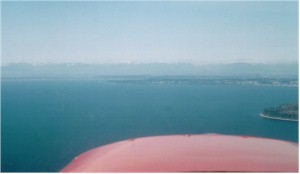
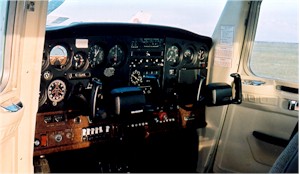
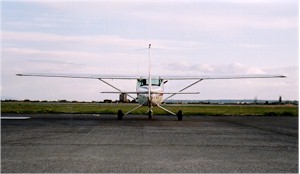
The Earths' horizon is used to determine the aeroplane's attitude. This is the Level (Cruise) Attitude.
In the last lesson we learned about the aeroplanes' controls, taxied out, and took off. Now we are airborne let's look at how the controls are used to create movements that allow us to manoeuvre in the air.



The Earths' horizon is used to determine the aeroplane's
attitude. This is the Level (Cruise) Attitude.
The datum used to determine an aeroplanes attitude is the Earths own horizon, and we’ll start with the level attitude.This is the attitude that is used for cruising along enroute to a distant destination. If you are sitting in a Cessna 152 the horizon should be about one hands width above the top of the instrument panel.
The control column should be in the centre while we are cruising but you may feel some pressure from the elevators and so you will have to trim the aeroplane. If you make a paper aeroplane for yourself, you can see what is meant by the word Trim. The paper aeroplane will only fly at one speed, too slow and it will Pitch down, too fast and it will Pitch up, at the correct speed it will glide at the attitude and speed that it is trimmed to fly at.
The full size aeroplane is exactly the same as the paper aeroplane in respect of trim. If we want to fly faster we apply more power and lower the nose a little, but the aeroplane wants to pitch up like the paper plane. If we want to fly slower, we have to reduce the power and raise the nose a little, but the aeroplane will want to pitch down to regain its trim speed. The full size aeroplane has a trim tab on the elevator to remove these pitching loads and make your flight much more pleasant, so the use of the trim tab is a very important.
Being able to trim an aeroplane to fly "hands off" will make your flight more efficient and easy
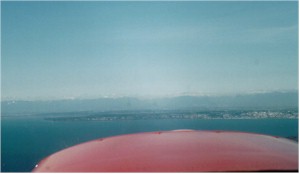
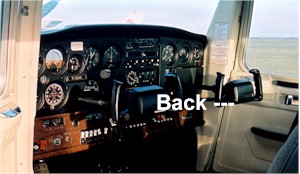
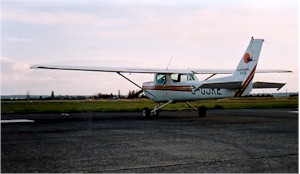
The nose is raised to the Nose Up (Climb) Attitude by
pulling the Control Column back to Pitch the nose up using the
Elevators.
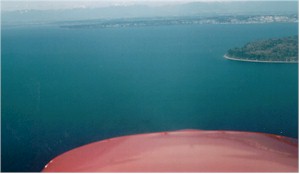
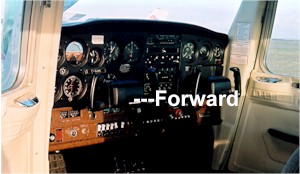
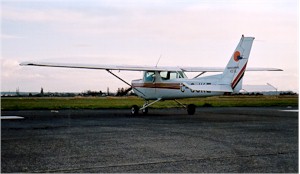
The nose is lowered back to the cruise attitude or into the Nose
Down (Glide) Attitude as shown here by pushing forward on the
Control Column.
Down elevator will cause the aeroplane to Pitch nose down.
So there’s our first movement, it’s called Pitch, we control pitch using the Elevators; by bringing the Control Column back towards us to pitch nose up, and by pushing it forwards to pitch nose down. Generally, the Nose up Attitude is used to Climb, the Nose down Attitude is used to Descend, and the Level Attitude is used to Cruise.
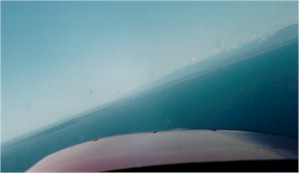
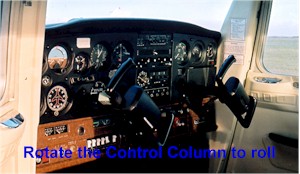

The Bank Attitude is achieved by rotating the Control
Column in the desired direction to Roll the aeroplane using the
Ailerons.
In flight we need to be able to turn, for this we use the Banked Attitude Once again the banked attitude uses the horizon as its datum. To bank the aeroplane we rotate the Control Column in the direction we want to turn, this will cause the aeroplane to Roll, which we will stop when the desired Angle of Bank has been achieved.
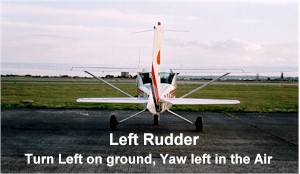
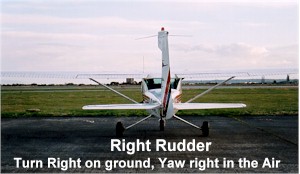
So what do we use the Rudder Pedals for? These are used to control Yaw. If you move the cursor arrow on your computer from the bottom of the screen to the top you will see that it is pointing to the left yet traveling straight up the screen, this cursor arrow could be said to be Yawing to the left! Obviously it is more economical if our aeroplane is pointed in the direction we want to go so we control yaw by using the rudder pedals.
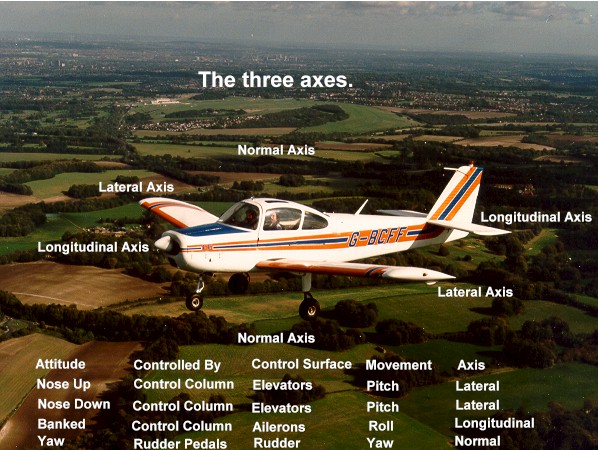
Imagine an aeroplane. A line that goes from the nose to the tail is called the Longitudinal Axis, movement about this axis is called Roll, and is produced by the Ailerons by rotating the Control Column. If you took a line that joins the left wing tip to the right wing tip, this is called the Lateral Axis, movement about the lateral axis is called Pitch and is produced by the Elevators by moving the Control Column forward and backward. A line straight through the top of the aeroplane and out the bottom of the aeroplane’s fuselage, (Vertical on level ground!), is called the Normal Axis, movement about this axis is called Yaw and yaw is controlled by using the Rudder Pedals
In the next lesson we will carry out some inflight exercises so you can see how this information is applied.
© Michael Peare 2015